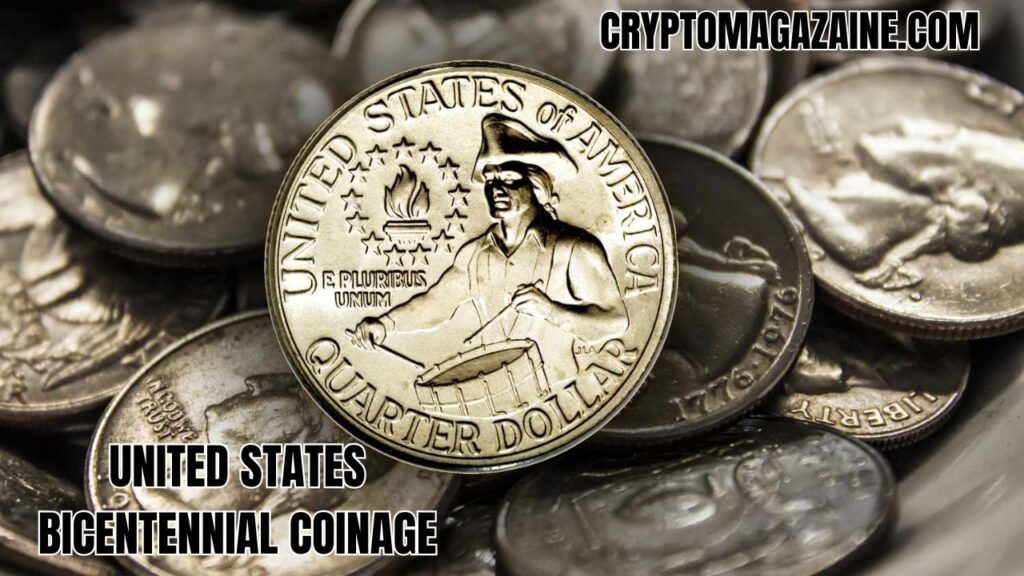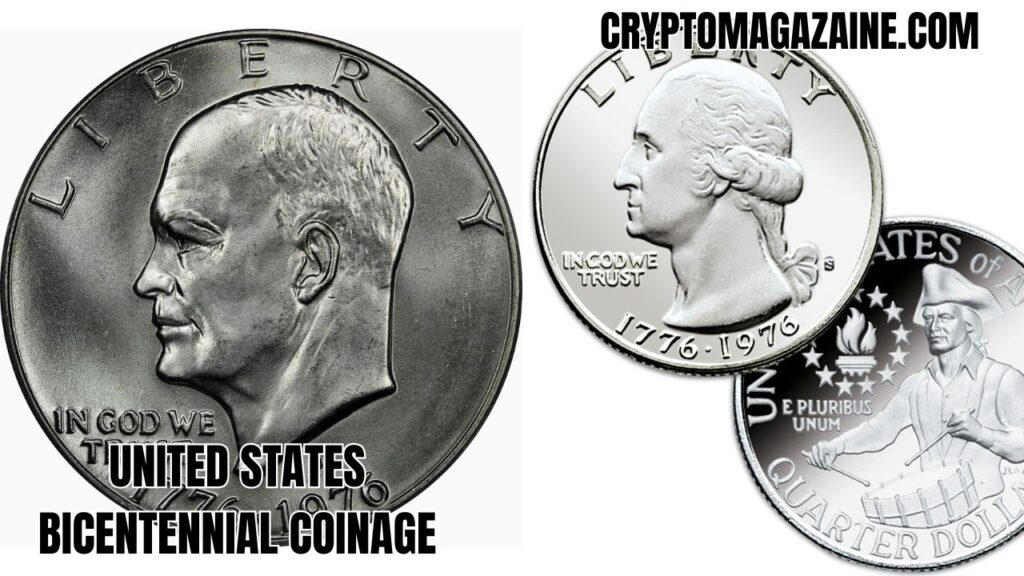Introduction: The Legacy of the United States Bicentennial Coinage
The United States Bicentennial coinage stands as one of the most iconic numismatic releases in American history. Issued in 1975 and 1976, these special coins celebrated the 200th anniversary of the nation’s independence. With their unique dual-dated markings — “1776–1976” — and patriotic designs, the United States Bicentennial coinage represented more than currency; it was a symbol of pride, unity, and reflection on America’s journey from its revolutionary beginnings to its modern achievements.
This article explores the creation, symbolism, varieties, and lasting legacy of the United States Bicentennial coinage, highlighting how these coins remain cherished among collectors and history enthusiasts alike.
Historical Background of the United States Bicentennial Coinage
The idea for the United States Bicentennial coinage was first proposed in the early 1970s as the nation began planning celebrations for the 200th anniversary of the Declaration of Independence. Congress approved special commemorative designs for three denominations — the quarter, half dollar, and dollar — to mark the occasion.
Unlike typical commemorative coins, these were not limited-edition collectibles but circulated widely, allowing millions of Americans to participate in the Bicentennial celebration through everyday transactions. The release of the United States Bicentennial coinage reflected a rare intersection of national pride, artistry, and accessibility.

The Three Denominations of the Bicentennial Coinage
1. The Bicentennial Quarter
Perhaps the most recognized of all, the Bicentennial quarter featured a reverse design by Jack L. Ahr depicting a Colonial drummer with a victory torch surrounded by thirteen stars. The obverse retained George Washington’s classic portrait, while the date “1776–1976” commemorated two centuries of independence.
This design symbolized America’s revolutionary spirit and the courage of ordinary citizens who fought for freedom. To this day, the Bicentennial quarter remains one of the most nostalgic coins in U.S. history.
2. The Bicentennial Half Dollar
The United States Bicentennial coinage also included a redesigned Kennedy half dollar. Seth G. Huntington’s reverse artwork showcased Independence Hall in Philadelphia — the birthplace of the Declaration of Independence.
This powerful image linked the coin directly to America’s founding moment, and the inscription “200 Years of Freedom” reminded citizens of the enduring values of liberty and democracy.
3. The Bicentennial Dollar
The dollar coin, designed by Dennis R. Williams, featured the Liberty Bell superimposed on the Moon — a striking combination of history and progress. This design connected the past and future, celebrating both the signing of the Declaration and the space-age achievements of the 20th century.
As part of the United States Bicentennial coinage, this dollar symbolized the American journey — from revolution to exploration.
The Dual Dates: 1776–1976
One of the most distinctive features of the United States Bicentennial coinage is its dual-dated marking. Instead of a single minting year, the coins bear “1776–1976,” representing the nation’s 200-year span of independence.
This design choice not only set the coins apart but also made them timeless reminders of America’s founding ideals. Even today, when these coins appear in circulation, they evoke memories of the country’s milestone celebration.
Composition and Minting Details
The United States Bicentennial coinage was produced in both standard copper-nickel clad and special silver-clad versions.
- Copper-Nickel Clad: Released for general circulation through banks nationwide.
- 40% Silver-Clad Versions: Produced for collectors in special sets by the U.S. Mint at San Francisco.
Mint marks from Philadelphia (no mark), Denver (“D”), and San Francisco (“S”) indicate where each coin was struck. The San Francisco Mint’s proof and uncirculated silver sets have since become especially desirable among numismatists.

Symbolism and Artistic Interpretation
Each coin in the United States Bicentennial coinage series was chosen through a public design competition — a reflection of the democratic spirit the coins sought to celebrate. Over 900 artists submitted their work, showcasing America’s creativity and diversity.
The chosen designs emphasized themes of unity, liberty, and progress. From the drummer boy’s courage to the Liberty Bell’s resonance and Independence Hall’s grandeur, the United States Bicentennial coinage told a visual story of the nation’s past and promise.
Collector’s Value and Market Interest
Even decades later, the United States Bicentennial coinage continues to hold strong appeal in the coin-collecting community. While circulated examples are common and hold face value, uncirculated and silver versions can be worth significantly more depending on condition, mint mark, and packaging.
- Proof Silver Sets (S Mint): Typically valued between $10–$20.
- Uncirculated Silver Sets: Range between $12–$25.
- High-Grade Certified Coins: Certain coins graded MS or PF 70 can fetch premium prices from specialized collectors.
More than their monetary value, however, these coins hold emotional and historical significance, serving as tangible reminders of a landmark moment in U.S. history.
The Role of the Bicentennial Coinage in American Culture
When the United States Bicentennial coinage entered circulation, it became a nationwide phenomenon. Children collected them, adults cherished them, and communities celebrated their arrival. The designs inspired parades, exhibits, and educational programs during the 1976 festivities.
These coins also helped connect generations. Grandparents often passed Bicentennial quarters or dollars to grandchildren as keepsakes — small tokens of national pride and continuity.
Modern Relevance of the United States Bicentennial Coinage
In today’s digital era, physical currency holds new symbolic value. Coins like those in the United States Bicentennial coinage series remind Americans of a time when national celebrations were shared tangibly — through the simple act of exchanging change.
Collectors, educators, and history buffs still use these coins to teach about the nation’s origins, artistic heritage, and monetary evolution. The designs remain among the most beloved in U.S. numismatic history, and their influence can still be seen in later commemorative issues.
Preservation and Display of Bicentennial Coins
For those who own examples of the United States Bicentennial coinage, preservation is key. Proper storage ensures their beauty and value endure for generations. Experts recommend:
- Storing coins in protective capsules or albums.
- Avoiding direct handling with bare hands to prevent tarnish.
- Keeping them in low-humidity environments.
- Displaying them under controlled lighting for educational or aesthetic purposes.
These steps ensure that the coins remain pristine reminders of America’s bicentennial pride.
Legacy of the United States Bicentennial Coinage
The United States Bicentennial coinage remains one of the most significant national coin releases ever. It represented not just a celebration of history, but also a unifying cultural moment. Millions of Americans participated in the bicentennial through these coins, creating a collective memory that still resonates today.
For many, holding one of these coins is like holding a piece of America’s story — a small yet powerful link between past and present.
Conclusion: The Spirit of 1776 Lives On
The United States Bicentennial coinage embodies the enduring spirit of independence, progress, and unity that defines America. Through artistic design, historical symbolism, and mass circulation, these coins turned everyday currency into a national celebration.
Nearly fifty years later, their beauty and meaning remain undiminished. Each “1776–1976” coin serves as a reminder that while times change, the ideals upon which the nation was founded continue to inspire generations.






